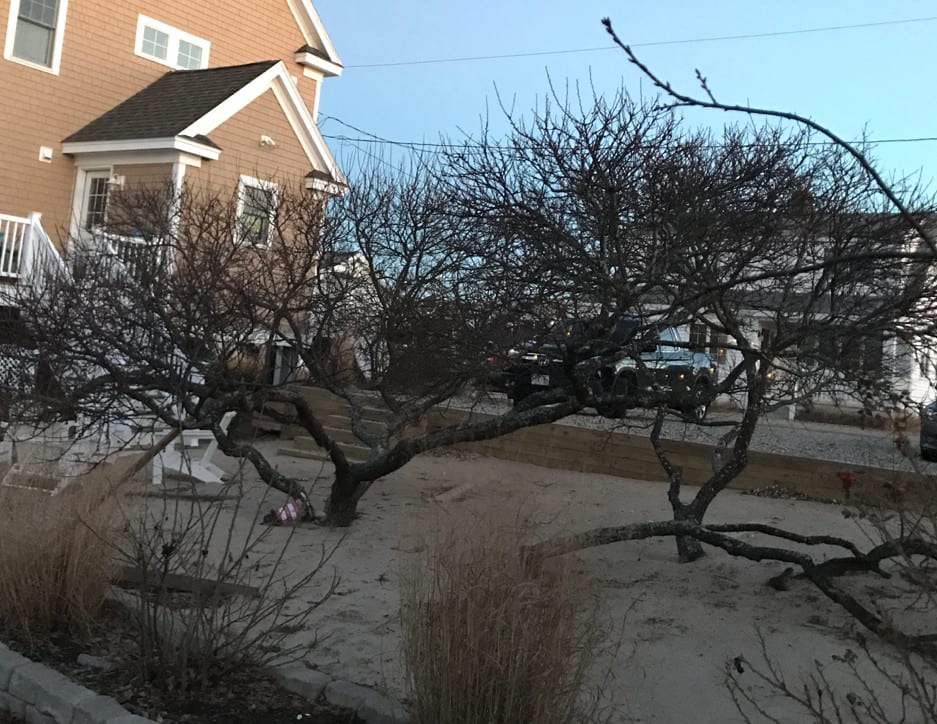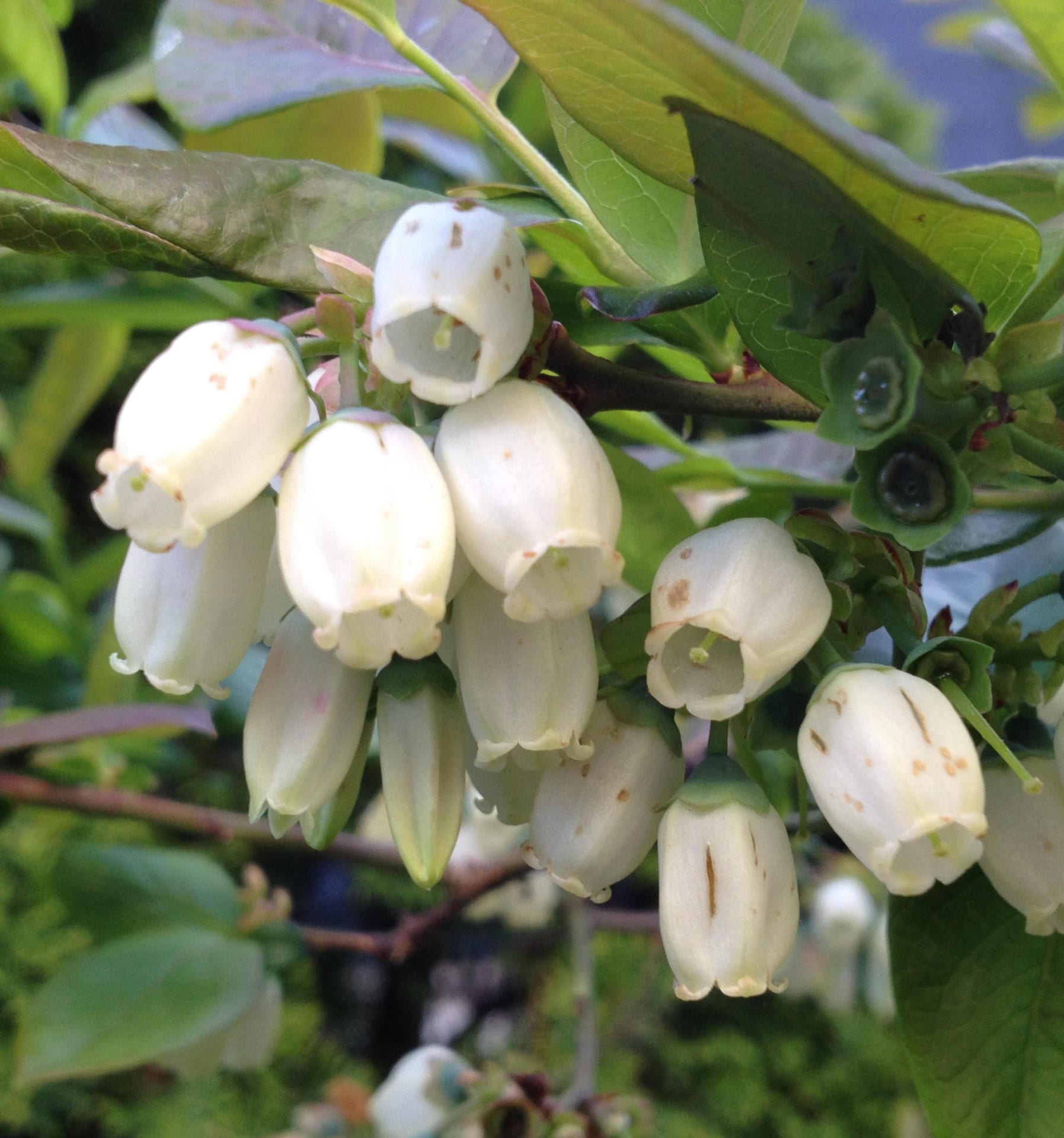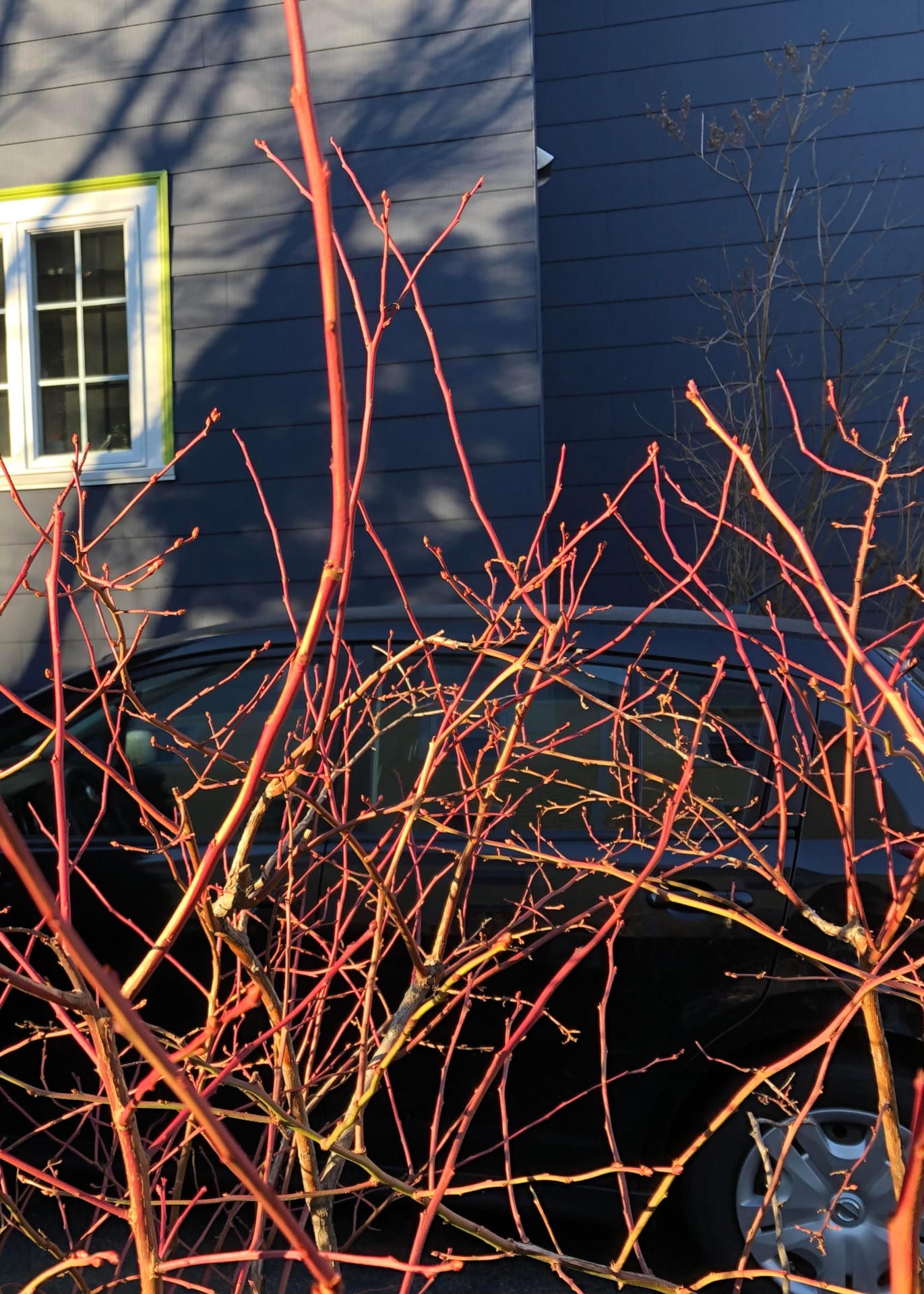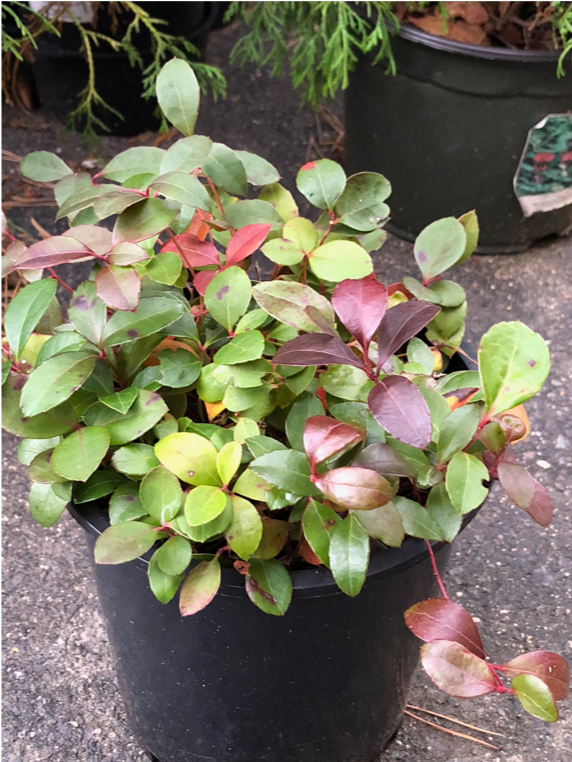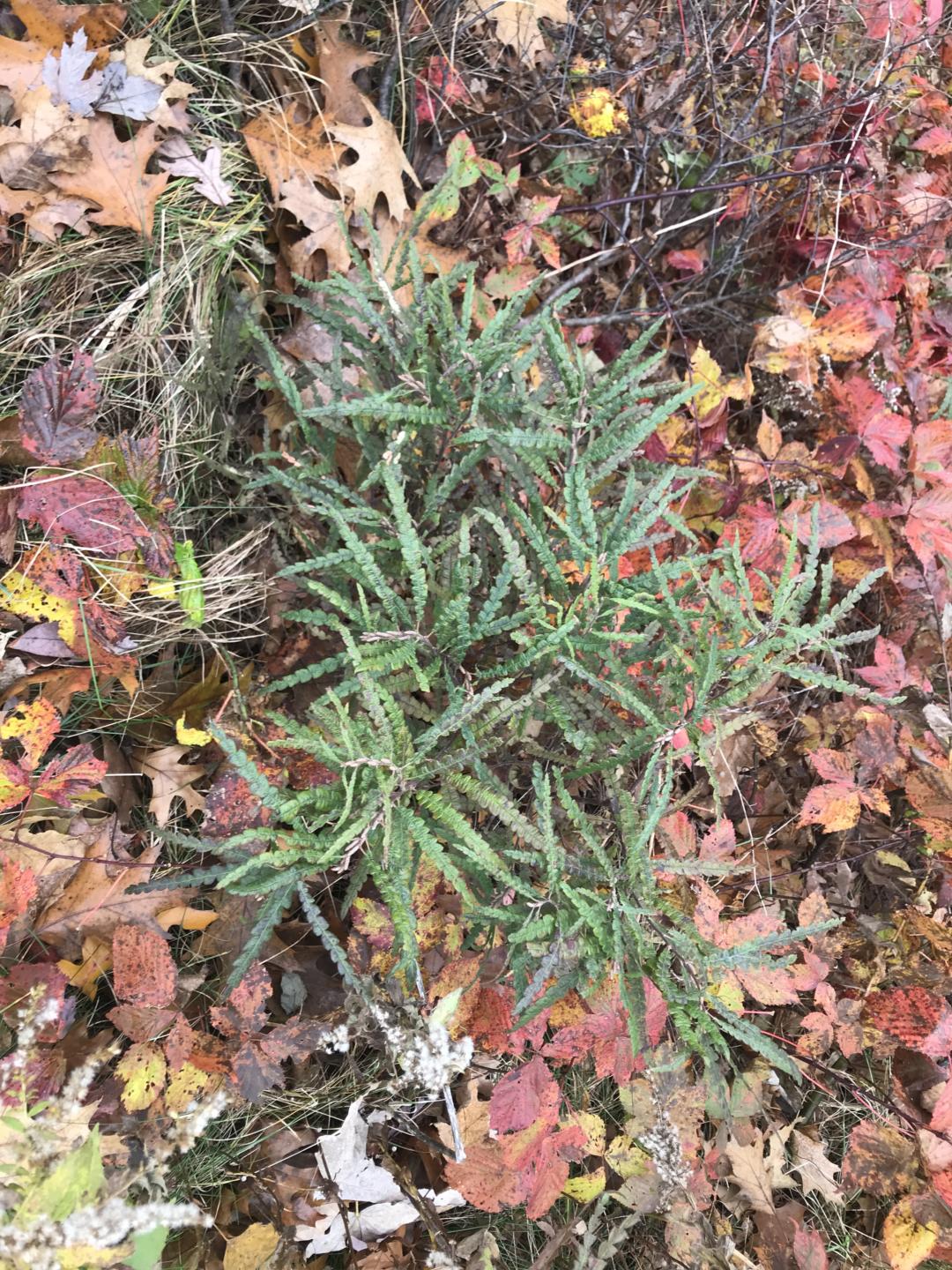by Kerry O’Kelly and Darcy Paige
There is a growing understanding that people need to make a connection between their food and its sources, but this is often difficult to achieve. When we think of food in the landscape, we most often think of the vegetable patch. That is a great place to start. However, vegetables are inherently an indirect connection to the garden as the produce is cleaned, prepped, cooked, and usually eaten in a space other than the garden. A focus on the vegetable patch also short changes the opportunities to see food value in the rest of the landscape. We need to expand our approach to thinking about food in the landscape and think of ways to strengthen this connection throughout the year.
Here is our approach:
- Celebrate your garden harvests by having a meal that highlights your produce.
- Incorporate edibles into the larger landscape for their natural beauty.
- Think about the ‘fleeting’ experience of taking a few leaves to nibble as you (or your client) pass through the garden.
- Save the bounty for colder days.

Position the table near the garden and enhance the dining experience with a colorful focal point. Photo: Darcy Paige
Celebrate the Harvest
Don’t just grab your vegetables and go…make it an event that you can enjoy with your friends or family. Place your table as close to the garden as you can get and make sure to highlight areas deep in the garden.
It doesn’t take reams of produce to make a meal…get creative and combine veggies in dishes.
And don’t forget dessert!
Natural Beauties
Incorporating perennial edibles in the garden is not a new concept and they can be quite beautiful for their leaf colors and shapes, like rainbow Swiss chard, or for their blooms like rhubarb. As we incorporate these ideas into our practice, we tend to rely on a few solid native shrubs that do quadruple duty:
- Have great design value
- Create habitat
- Provide food for people
- Provide food for wildlife
A quick description of our favorites:
Aronia melanocarpa/Aronia arbutilfolia (Black and Red Chokeberry) – Both these plants have a prolific spring blooms, abundant fruit which is very high in anti-oxidants, great fall color, and winter interest as the berries persist well into winter. Their form tends toward an upright oval shape but they may become a bit quirky with age. They can also be pruned into small trees. A. melanocarpa also comes in a small cultivar, ‘Low Mound,’ which is suitable for the middle or front of the bed.
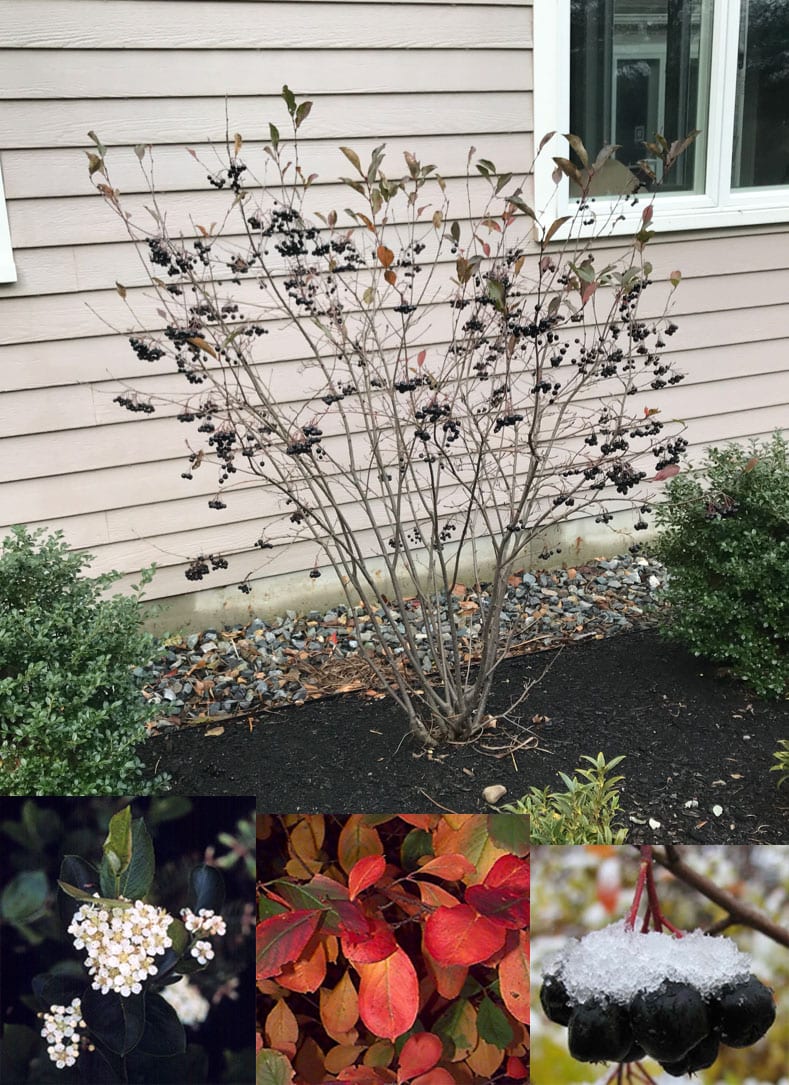
Aronia melanocarpa at four years growth. Photo top: Kerry O’Kelly; closeup blossom (left) and foliage (center): UConn Plant Database; closeup fruit (right): Blogspot.
Sambucus canadense (American Elderberry) – Great spring bloom, heavily fruiting, great wildlife value. The fruit needs to be netted if you hope to harvest any! The form is somewhat layered and rather leggy and it likes to ‘lean’ on other shrubs for support so it is best placed at the back of the bed. The blooming umbels also provide a very horizontal element, albeit temporary, in the garden. This plant can also take very wet feet. The cultivar ‘Black Lace’ makes a great impression against a lighter background.
Prunus maritima (Beach Plum) – This is a very tough plant that can basically grow in sand so it is great for hot, dry, and/or windy sites. It has good spring bloom and produces small (larger than berries) dusty purple fruits. The form is that of a round shrub, but it can be pruned into a small tree over time. It is not really a specimen plant and works best in small groups.
Amelanchier canadensis (Serviceberry) – Strong spring bloom, great fall color, abundant fruit. Most often found as a multi-stem tree, it can be used as a focal point in place of a dogwood or redbud. We find it to be a little lower maintenance in the fall as the leaves are small and clean up very easily (or better, will just blow away!).
Vaccinium corymbosum (Highbush Blueberry) – Interesting but subtle blooms in the spring, abundant fruit, nice fall color, and colorful stems provide winter interest. Shrub must be netted completely if you wish to harvest fruit. Form is an upright oval. Can be used very effectively as a screening or hedging plant as it responds well to pruning.
Vaccinium angustifolium (Lowbush Blueberry) – Tough, low-maintenance, plant with great fall color. Can be used in sun or shade, wet or dry. This is a go-to ground cover for many New England sites.
A Fleeting Experience
Many people don’t feel they have the time to lounge in their garden but we can extend their experience by encouraging them to adopt a grab and go mentality. Since taste is such a powerful sense, it can be a proxy for the food experience. There are several plants that can be nibbled on while in the garden or taken beyond the garden as the client is passing through. As professionals, we need to encourage our clients to experience their gardens in this way. We also need to teach them what is okay to put in their mouths and what not to!
Some of our favorites for a quick nibble:
- Gaulteria procumbens (Wintergreen)
- Agastache foeniculum (Anise Hyssop)
- Nasturtium
- Viola
- Aloysia citrodors (Lemon Verbena)
- Mentha x peperita (Peppermint) – any Mint okay
- Thymus citriodorous (Lemon Thyme) – any Thyme okay
- Salvia officianlais (Garden Sage)
- Dennstaedtia punctilobula (Hay-Scented Fern)
- Comptonia perigrina (Sweet Fern)
- Lindera Benzoin (Sweet Spire)
- Pinus Strobus (White Pine) – twigs
- Betula lenta (Yellow Birch) – twigs
- Prunus serotine (Black Cherry) – twigs
A Taste of Summer in Winter
Canned summer vegetables are certainly a treat in winter, but this is not the only way to bring the garden back to mind. Herbal teas (also known as tisanes) are a simple way to enjoy and remember the landscape at any time of year, although we think they are particularly memorable in the winter. Harvesting and drying the leaves, flowers, seed heads, or twigs are easy tasks even at the height of the busy summer season. Sipping a warm tea from leaves you harvested takes you right back to your garden. Again, a lot of this comes down to educating your clients in different ways to enjoy their landscapes.
Some of our favorite native plants for tisanes:
- Gaulteria procumbens (dried leaves)
- Ceanothus americanus (dried leaves)
- Lindera Benzoin (leaves in summer, twigs in winter)
- Comptonia perigrina (fresh fronds or dried leaves)
- Tillia Americana (dried flowers)
- Monarda fistulosa (fresh or dried leaves)
- Solidago odora (dried leaves and flowers or fresh leaves)
- Rhus typhinia (seed heads)
We hope this quick overview gives you some new ways to think about food in the landscape and ideas to make this connection to our senses throughout the year. So, as we all rest and recoup this winter, take some time to think about how you can incorporate some of these ideas in your practice – perhaps over a nice, hot tisane.
About the Authors
Kerry O’Kelly is a landscape designer and owner of Garden Dance Landscape Design. Kerry also works closely with Laurel Garden Design in both the design and maintenance divisions. Kerry became a Certified Master Gardener in 2009 and graduated with a Masters Certificate in Landscape Design from the Landscape Institute and the Boston Architectural College in 2013. She was certified as a NOFA Organic Land Care Professional in 2017. As part of her commitment to ecological practices, she has been involved for over 10 years with the Ecological Landscape Alliance and served on the ELA Board of Directors since 2012.
Darcy Paige is the owner of Laurel Garden Design and has worked designing, installing, and maintaining gardens for over 20 years. Darcy is a Massachusetts Certified Horticulturist, a NOFA Organic Land Care Professional and holds a Masters Certificate in Landscape Design from the Landscape Institute of Harvard University and the Boston Architectural College. Darcy is dedicated to designing gardens with both the client and the environment in mind. She uses native plants, utilizes sustainable practices, and maintains gardens organically.
***
Each author appearing herein retains original copyright. Right to reproduce or disseminate all material herein, including to Columbia University Library’s CAUSEWAY Project, is otherwise reserved by ELA. Please contact ELA for permission to reprint.
Mention of products is not intended to constitute endorsement. Opinions expressed in this newsletter article do not necessarily represent those of ELA’s directors, staff, or members.


